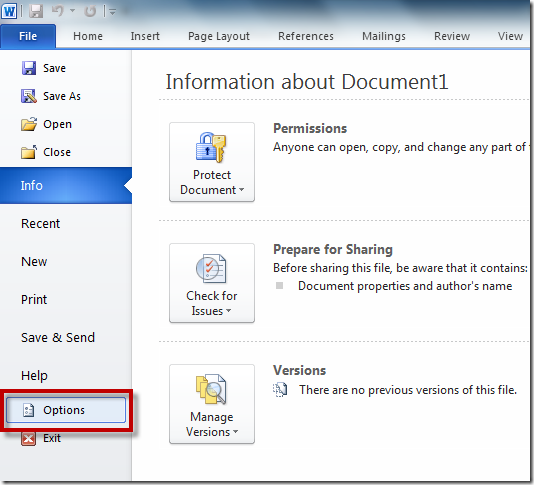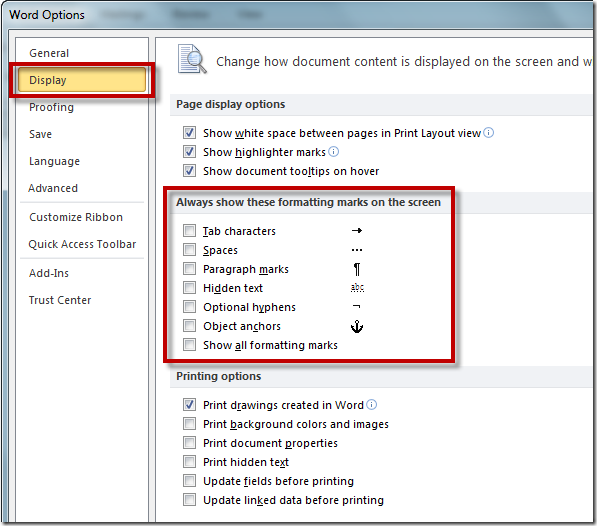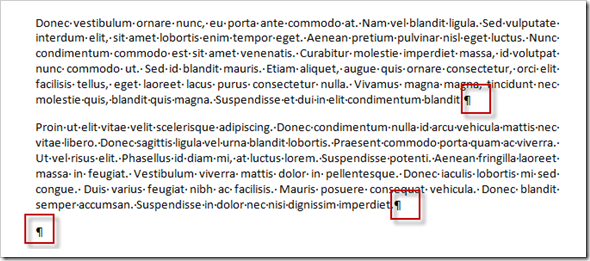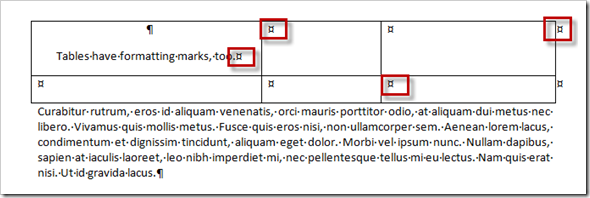 One of the essential rules for effectively creating documents in Word is to write correctly. Do not get me wrong as this has nothing to do with grammar, style or spelling.
One of the essential rules for effectively creating documents in Word is to write correctly. Do not get me wrong as this has nothing to do with grammar, style or spelling.
If you want Word to correctly align and space your paragraphs, wrap text around objects as you want and to make the report table look exactly as you want to, then you have to make sure you didn’t put extra spaces between words or in cells, that you have paragraph spaced correctly or indentation set up so that your document looks just right.
It would be very hard to spot one extra space or place where you accidentally pressed TAB twice instead of once if it weren’t for formatting marks. These marks are non-printable characters and show us places where we’ve pressed SPACE, TAB, ENTER, or where hidden text or object anchors are.
Without them it would be almost impossible to create our documents in effective way: it would take very long to correct errors that prevent correct alignment of text and objects.
Typically, Formatting Marks are not visible unless you turn them visible by pressing ¶ on the Home tab in Word:
Alternatively, you can use keyboard shortcut Ctrl + * or Ctrl + Shift + 8 to toggle Show/Hide Formatting Marks on or off. Toggling the display of formatting marks has two functions:
- ON – turns on the display of all formatting marks,
- OFF – turns off the display of formatting marks except for those that you choose to remain visible until you change the options. Where to choose which formatting mark stay on or off after pressing the¶ button?
- 1. Press File tab, then press Options
2. Press Display
3. On the left, under Always show these formatting marks on the screen choose what formatting marks you want to be visible even after turning the button off.
There are many formatting, or sometimes called non-printing, marks in Word. Let’s me introduce you to the most common ones and what are they used for:
1. Space mark
Dots are formatting marks for Spaces and each dot represents position in text where you pressed Space Bar on your keyboard. One dot – one space bar press.
2. Paragraph mark
Paragraph mark (¶ ) or pilcrow represents the end of the paragraph or paragraph break. After this sign, Word starts new paragraph and puts text cursor in new line.
This is also the place in the document where you pressed Enter or Return on your keyboard. Text between these two signs is defined as a paragraph and has some properties that can be adjusted independently of other text (or paragraphs), like alignment (left, right, centered, justified), spacing before and after paragraph, spacing between the lines, numbering, and so on.
3. Tab mark
Tab presses are represented with an arrow pointing right:
4. Line break
Line break mark or ![]() represents the place where line breaks and text starts in the next line. You can insert line break by pressing Shift+Enter.
represents the place where line breaks and text starts in the next line. You can insert line break by pressing Shift+Enter.
Its function is much similar to Paragraph mark and inserting line break has similar effect on text except that the line breaking points do not define paragraphs.
5. Hidden text
Hidden text is represented by dotted line placed under text that is marked as hidden.
When you turn off formatting marks the above text look like this:
Hidden text is not printed. But, wait! How do you hide the text? Well, it is simple. Do this:
a) select the text you want to hide
b) right-click on the selected text and click Font
c) click on Hidden
Why would you hide a text? Primarily to tweak your document or text layout to fit specific needs. You can also hide it if you don’t want to print it at the moment and don’t want to delete it.
Back on formatting marks.
6. Object anchors
Object anchors is the point in text where certain objects in the document have been inserted and object anchors have influence on the behavior of that particular object in the text. In other words, object anchor is like a hook or ring found on the back of the painting that is used to hang paintings on the wall.
It is represented by a small icon of an ship’s anchor. This picture shows object anchor of a Dropped cap text or Text box,
and this picture shows object anchor of an inserted picture:
7. End of cell mark
It is found (guess where? ) in cells and it marks the end of the last paragraph in cell or the end of the cell. It reflects the formatting of the cell.
8. Breaks – page, column, section, text wrapping
Page breaks or pagination breaks come in different flavors and their purpose is to control the text by breaking its flow and continuing it somewhere else. Where? It depends on what page brake have you inserted.
a) Text wrapping break is used primarily when creating web content to wrap text around objects, such as pictures, to separate text body from caption text, for example.
Why insert this one instead pressing Enter or Return several times? Text wrapping break forces the following text to stay right after an object (like in picture below) without changing its position where paragraph mark is adjustable by font size, space before and after paragraph (and other properties) that can affect position and movement of text.
b) Section break also exist in different colors: next, continuous, even and odd.
We use them to separate document in sections. Sections allow us to format the document layout differently, set different page sizes and orientation, different header and footer for each section and other interesting things. (check soon for post about sections and breaks!)
c) Column break
is used to put text in columns and it isolates column text from body text
d) Page break
is useful to mark ending of page and by inserting page break, text after it is forced to begin at the beginning of the page.
There are lot more formatting marks, or as often referenced to as hidden text (also very wrong, because we know what is hidden text is) or special text, like hyphens, bookmark marks and field codes, to mention some of them, but I’ll leave the explanation of them for a later post.
Until then, good luck in taking control of your text and breaking it successfully!















